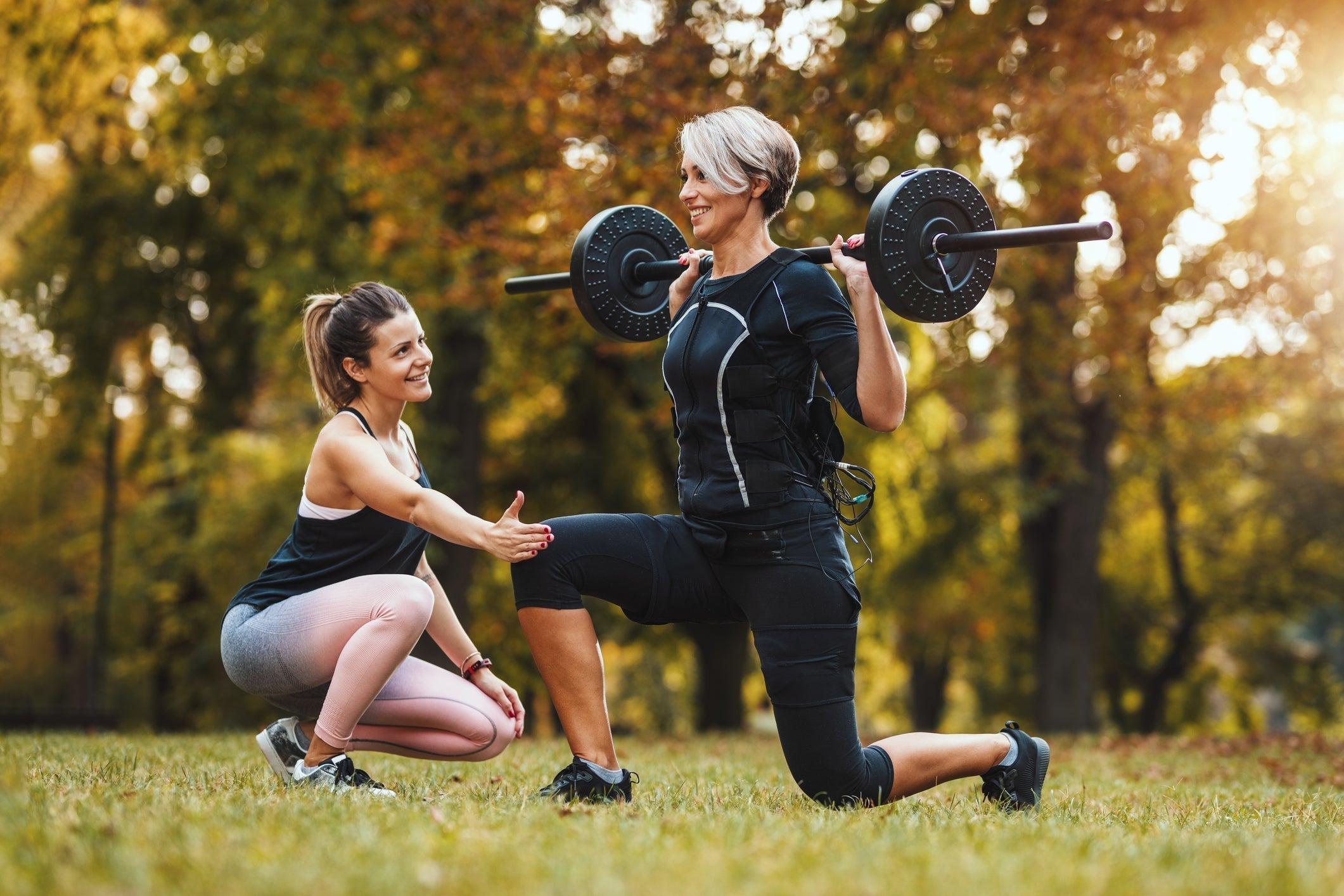If you’ve heard rumblings that you should be strength training in midlife and beyond, then take note. Strength training is a life saver - literally.
According to an article in Science Direct released April 2023: “While performing resistance training (RT) is considered part of physical exercise, it deserves consideration as its own domain for health promotion”.
Skeletal muscle makes up 30-40% of the total body mass, is metabolically active (burns energy/calories), connects bones via tendons and ligaments to facilitate movement and has a complex interconnection with the nervous system.

Why Strength Training is Important for Ageing and Menopause
For women from midlife or going through perimenopause and menopause, the aging process will have you losing up to 16% of your lean muscle mass from the age of 30. It's called "sarcopenia" and this happens with the decline in oestrogen and the down-regulation of receptors in your muscles that respond to oestrogen.
The oestrogen/muscle connection results in:
- Loss of muscle mass and response to stimuli (movement and weight training)
- A shift from Type 2 muscle fibres (fast twitch explosive dynamic) to Type 1 muscle fibres (slow twitch endurance)
- Reduced speed and efficiency
- A reduction in protein synthesis responsible for muscle repair, recovery and adaptation
- Higher sensitivity to muscular stress from training
If you have noticed an accelerated and unwanted fat gain, then you’ll want to keep reading.
The Role of Glucose
Muscle plays a major role in the uptake of glucose from the bloodstream in response to insulin. When there is suboptimal glucose uptake, we can develop an insulin resistance which leads to increased fat storage, increased inflammation and the challenge with moving and recovering from exercise. That increased fat storage tends to accumulate around the stomach and hips.
My Experience with Weight and Strength Training
I have a personal love-hate relationship with weight training. When I was a personal trainer in my 20's and competing as Ms Fitness New Zealand internationally, my workouts were heavily skewed towards weight training. I was 10kg heavier than I am today but significantly leaner. In my 30's I found marathons, group fitness back-to-back classes and any workout that would elevate my heart rate as fast as possible for the limited time I had due to career goals and having a family. I also cherished the rush of endorphins that cardio provided and to be honest, I was a bit burnt out from competing and dieting for 10 years of my life. The weights went untouched for many years.
Enter my 40's and I'm the fittest I've ever been. Except that it's all feeling a little too hard and it's taking longer to recover. Two classes/day went down to one HIIT workout/day and a lot more yoga. The weights lay untouched and collecting dust. Once I realised I was in perimenopause (read all about it in My Menopause Memoir), the science unequivocally pointed back to weight training. And not some light weights that I can strap to my ankles to tone my booty or a resistance band to crab-walk up and down the room. I'm talking barbells, dumb bells and chin ups.

Tips for Getting Started with Strength Training
Here are my TOP TIPS to integrate weight training into your life to maintain muscle for healthy aging:
1. Seek a Personal Trainer
If you are a complete beginner, seek a personal trainer. Learning HOW to lift weights safely will ensure results and longevity.
2. Start with the Basics
Start with the basics - squats, deadlifts, pulls and pushes.
3. Incorporate Weight Lifting
Lift weights that are heavy enough to fatigue the muscle at 8 -10 repetitions and 3-4 rounds of each exercise.
4. Focus on Compound Muscle Groups
Compound muscle groups - where you are using more than one muscle in a movement. Don't waste your time on seated bicep curls. Chin ups will work your back muscles and your biceps simultaneously.
5. Schedule in Adequate Rest
Ensure you get 72 hours rest between weight training sessions to fully recover. This allows for TWO focused weight training sessions per week.
6. Light Cardio Between Weight Training Sessions
Use light cardio, yoga, stretching and walking in between weight training sessions to maintain your cardiovascular fitness, mobility and flexibility. Only do this if you have the energy, otherwise REST.
7. Don't Neglect Your Abdominal Muscles
Schedule a core workout at least once a week. Those core abdominal muscles are essential for your posture and injury prevention. This could also be a Pilates session.

Sexy Ageing Fitness and Lifestyle App
For strength training workouts for women 40+ try out the Sexy Ageing Fitness and Lifestyle APP! Everything you need is there - FREE One Week Trial, 30 day and 3 month programs and monthly subscriptions.
Want to read more health and lifestyle tips like this? Check out my other guest posts on the Nature's Help blog here.
Written by Tracy Minnoch-Nuku
Tracy Minnoch-Nuku (B.Ph.Ed - Otago, NZ and MBA, Vic, Melb.) is an educated and experienced advocate for women's health and fitness. With over 30 years in the fitness industry, Tracy began her career as a Group Fitness Teacher and Personal Trainer where she transformed bodies and lives through fitness and nutrition. Tracy spent 20 years developing teams and fitness training programs in Asia - live, online and through fitness apps. Tracy’s own experience with menopause was messy. Without any prior warning, her symptoms began to accelerate and negatively impacted on her physical and mental health, work life and relationships. Tracy documents all of her symptoms and experiences in her book “My Menopause Memoir” as well as through her highly acclaimed podcast “Sexy Ageing”.
Learn more about Tracy HERE






